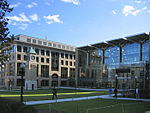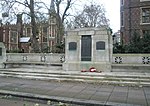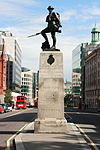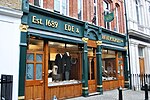London Silver Vaults

The London Silver Vaults is a large subterranean market that opened as The Chancery Lane Safe Deposit on 7 May 1885. Originally renting out strong rooms to hold household silver, jewellery and documents, it transitioned to housing silver dealers in secure premises a few years later. It is located on Chancery Lane, London, WC2A 1QS. One vault was used to store a farthing, with the owner paying over £100 over the years for the vault.With 1.2-metre (3.9 ft) thick walls lined with steel, the vaults were never broken into. The building above the vaults was struck directly with a bomb during World War II – however, this did not damage the vaults at all, despite the building being destroyed. A new building, Chancery House, was constructed ten years later, and since 1953 it has been in its present format, with shops based underground. All of the shops have been owned for at least 50 years by the same families. It is said that it has "the largest single collection of silver for sale in the world", contained within more than forty shops.
Excerpt from the Wikipedia article London Silver Vaults (License: CC BY-SA 3.0, Authors, Images).London Silver Vaults
Chancery Lane, City of London
Geographical coordinates (GPS) Address Nearby Places Show on map
Geographical coordinates (GPS)
| Latitude | Longitude |
|---|---|
| N 51.5175 ° | E -0.1129 ° |
Address
Chancery Lane 53-64
WC2A 3UA City of London
England, United Kingdom
Open on Google Maps










